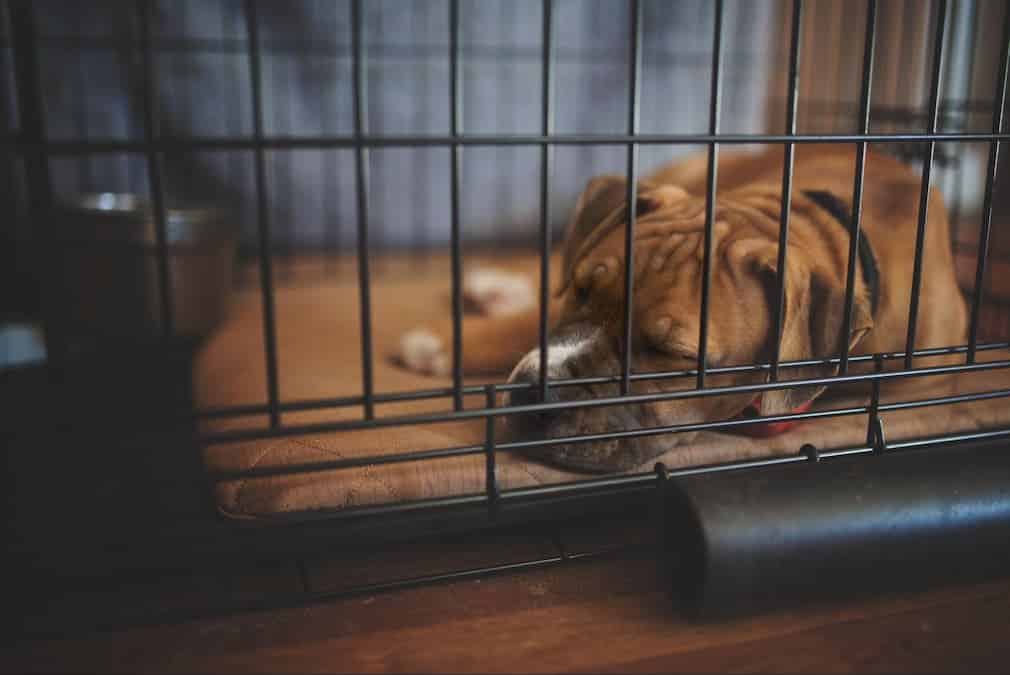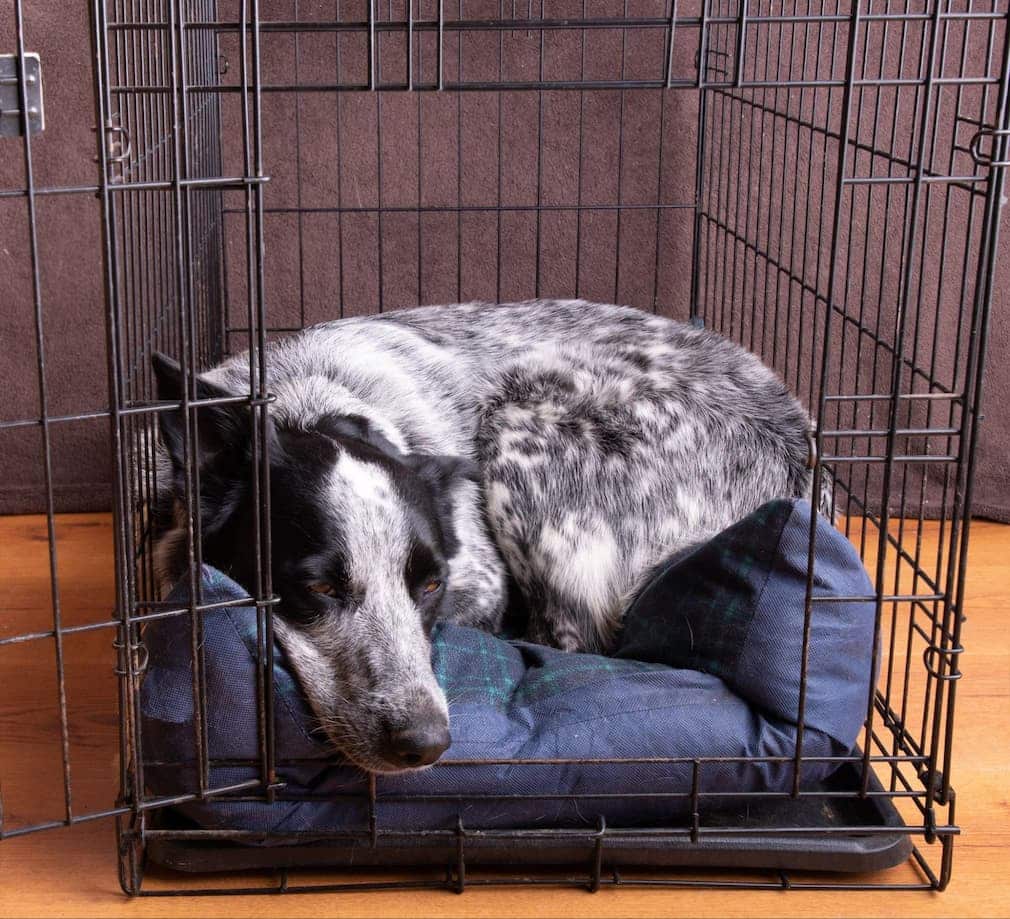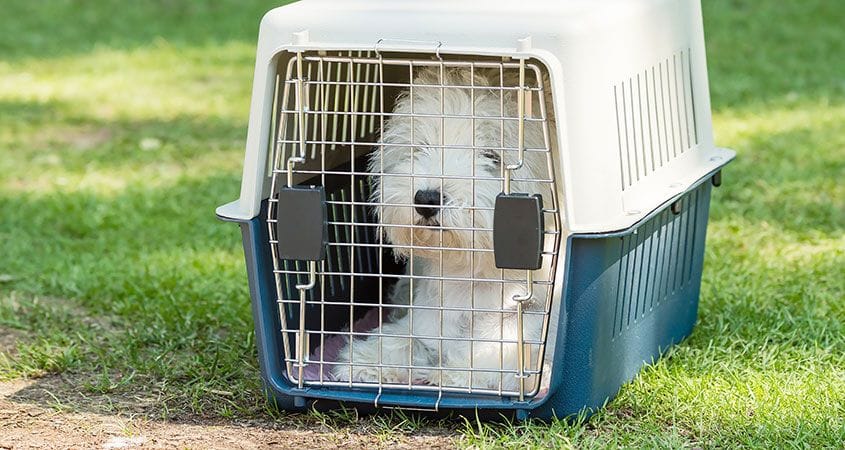Dear Cesar,
My husband and I have a male, 12 month old Cocker Spaniel/Pomeranian mix. We have been crate-training him, and he has virtually no problems at night. But since we’ve been crating him during the day for the last two weeks, he ALWAYS soils the crate in some way.
It doesn’t seem to matter whether there’s bedding in there or not.
We both work far from home, and he’s in his crate for 10-12 hours a day. Our female, 4 year old Toy Rat Terrier does fine and has for years. Is our 12 month old still too young? How can we stop him from soiling his crate during the day?
Thanks,
Abi
Cesar Millan’s Answer:
Dear Abi,
A change like this can be dramatic for any dog, especially a young dog. If you don’t slowly ease a dog into a new routine, he can react unpredictably. Also, dogs are daytime animals, so they’re going to pee more often during the day than at night. If you leave the dog in a crate during the day for 10 or 12 hours, you have to make sure that every 4 hours, somebody comes and takes him out, then brings him back. Then eventually, what you can do is extend those 4 hours to 6 hours, then 8 hours, and so on until he gives you exactly the kind of behavior he was giving you before. But remember, it is his nature to be more active in the daytime. Just as he has to adapt to your new schedules, you must be mindful of his!
Stay calm and assertive!
Cesar Millan

What Is Crate Soiling?
Crate soiling is a canine behavioral issue that involves the dog urinating or pooping inside its crate, even if it has been taken outside for regular bathroom breaks. The behavior can lead to a feeling of helplessness in owners, but it can be addressed with training and patience. A dog peeing in a crate can be caused by many factors, including a lack of an established daily routine and inadequate crate training, fear or anxiety issues, lack of exercise and stimulation, medical disorders, or digestive upsets – any combination of which can contribute to the problem.
Why Does Your Dog Soil In A Crate?
Dogs may poop or pee in crates because they are either not getting enough exercise and stimulation. If a dog is left in the container too long, they may begin to see it as a place of punishment instead of a safe space. They may also be uncomfortable in the same area for extended periods, leading to toileting. Also, some pups have poor bladder control that can be exacerbated by emotional states or simply being in the same spot for too long.
Accidents may also happen because the crate is too large. If your dog’s crate is too large, they may be able to move away from the area they soiled.
Signs of Stress or Anxiety in Dogs
Soiling in their crates can result from anxiety and fear in dogs. Fearful situations or environments can make them feel stressed, resulting in accidents indoors or inside the container. Dogs who fear people, sounds, sights, new objects, or other animals may react to the stimuli by soiling in their crates out of distress. Furthermore, young puppies who are not adequately trained and are suffering from separation anxiety could unintentionally soil their crates if not monitored carefully. Below are some signs of dog anxiety.
- Pacing and Shaking
- Drooling
- Yawning
- Panting
- Diarrhea or Accidents
- Shedding
- Stiff Posture
Prevention Strategies for Soiling
We often hear the question: “How do I get my dog to stop pooping in his crate?” One of the first things you should pay attention to is your dog’s poop. If the stool is loose, there could be a health concern, and you should seek your veterinarian’s advice on how to treat it. If you notice the stool looks normal, it could be an issue of proper potty training, bad habits, the wrong crate size, or other problems.
Train Properly
A dog peeing in the crate could indicate that they were not housebroken. Crates should not be used for long periods during the training period, and take some time to go through proper training and slowly increase the crate time.
Exercise
A tired dog will sleep in the crate. Exercise is essential to keep whining, soiling, and destructive behavior at bay. Keep a regular schedule that includes walks, playtime, and exercise.
Stick to a Schedule
Feeding times, walks, bathroom breaks, and playtime become part of your dog’s daily routine. They become used to things happening at a particular time, and you may notice them waiting by the door when it’s time for their daily walk or hanging out near their food bowl when it’s close to meal time. Plan your pet’s crate time accordingly, and give them 30-60 minutes after eating to go potty before putting them in their crate.
Keep Crate Empty
Some dogs will use a blanket in the crate to cover their mess. Remove all bedding and blankets until your pet is properly trained, so your dog learns that laying in their mess is not ideal.
Cleaning Solutions for Soiled Crates
Your furry friend deserves a clean and nice-smelling home, just as you like your living space to be tidy and dirt-free. Unfortunately, you may have to clean your dog’s crate from a soiling accident, and here are some easy steps to clean the mess.
- Wash any bedding and soft toys
- Wipe down plastic toys
- Wash the crate, and remove the bottom tray if there is one. Weather permitting, you can wash and dry the container outside in the sunshine. The shower is also another option if going outdoors doesn’t work.
- Allow the crate to air dry.
- Something to note: DO NOT MIX BLEACH WITH OTHER CLEANING PRODUCTS. IT CAN CAUSE A DANGEROUS CHEMICAL REACTION.

Tips for Curing the Problem
Patience and perseverance are needed to get your dog to stop soiling inside the crate. You first need to determine the underlying cause of your pup’s soiling issue. Does boredom cause it? Anxiety? Cleanliness issue? Once you know the root cause, you can start taking steps to solve the problem, such as establishing a routine or providing more mental stimulation with interactive toys or walks.
Create a Safe and Hygienic Crate Environment
An essential point in crate training is ensuring the crate is comfortable, safe, and hygienic for the dog. A proper place for your pup needs to be big enough for your pet to stand up, turn around, stretch out and lie down with ample room to move about. It should also be comfortable – padded bedding or mats can make the experience more pleasant. Lastly, maintenance of your pup’s crate is vital – regularly clean it with soap and water and ensure that there is no mess left behind which can create an unhygienic environment.
Avoid Punishments & Speak Gently to Your Dog
If your pup learned a bad habit, it’d take way longer to change it than to teach them the good behavior. Rather than yelling or putting their nose in the crate mess, using positive reinforcement to train your pet to the desired behavior is better. Using a calm voice to encourage your puppy to do their business outside instead of their crate will reap positive benefits in the long run. Stay consistent and keep a positive attitude.
Consider Professional Pet Training
Utilizing the expertise of a professional dog trainer can alleviate the stress of figuring out how to train your pup to stop peeing in their crate. Experts will assist you with learning how to effectively communicate with your furry friend and instill desired behaviors that will make living with your pet an enjoyable experience.
Exercise and Engage with your Dog Regularly
Engaging in playtime with your pet can help eliminate feelings of boredom and anxiety that many dogs experience when left alone too often. A regular exercise routine will strengthen your dog mentally and physically and tire them out for crate time.
How to Teach Your Dog Proper Crate Habits
Crate training is one of the most effective ways to teach your dog proper house etiquette. When you train your dog to use a crate, you show them that a designated area is the place for them to stay for short periods. It helps reduce destructive behaviors like chewing and excessive barking and provides them with a safe spot when they are feeling anxious or scared. With patience and consistency, you can easily teach your dog proper crate habits in no time!
Selecting the Proper Size Crate and Location
When you are ready to choose a dog crate, size is critical. Ensure your pup can walk in and move around comfortably when the door is closed. Measuring your dog is the best way to determine what size crate you need. You will also want to consider the location where you plan to put the container. To determine the height, have your dog stand and measure from the top of the head to the floor. For the length, you will measure from the tip of the nose to the bottom of the tail. Finally, add four inches to the measurements for the size crate you need to purchase.
Once you’ve selected the correct size crate, determine the location that will best promote a relaxing and calm environment for your dog.
Introducing Your Dog To the Crate
Crate training can be simple when you follow these steps:
Start Slowly
Allow your pup to explore the crate on its own. Never force them in. Put one of their favorite toys or a blanket in the crate, leave the door open, and allow their curiosity to take over. If needed, put a treat at the back of the crate to draw them in. Be patient. This process could take a few days.
Try Meal Time in the Crate
The next part of the training process is to get your pet used to being inside the crate for long periods.
Close the Crate Door
Once your dog has enjoyed a few meals in the crate, close the door during meal time. The first meal consumed with the door closed, you will want to open the crate door immediately after they have finished eating. From this point, you will slowly increase the time the crate door is closed while your furry friend enjoys their meal.
Increase Crate Time
When your pup has been hanging out in the closed crate without signs of stress or anxiety, you can increase the time without meals. Give a favorite toy or blanket for comfort, and leave the room for a few minutes. Return, but do not open the crate. Instead, sit down next to them for a few more minutes, then open the door. Over time, you will gradually allow more time in the crate until they can be in there successfully for 30 minutes or more.
Reward Positive Behavior
Whether you are training a puppy or an older dog to stop pooping in their crate, positive reinforcement rewards good behavior rather than focusing on the negative. You want to create a relaxing and comfortable place for your pup to retreat to. Make sure to offer plenty of treats for good behavior in the crate and for doing their business outside. Dogs love rewards, and they don’t have to be complicated or expensive.











